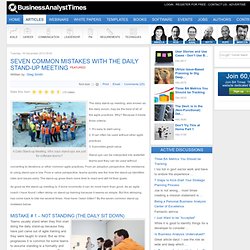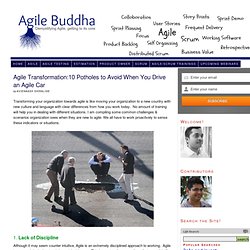

Your Path through Agile Fluency. Agile methods are solidly in the mainstream, but that popularity hasn't been without its problems.

Organizational leaders are complaining that they're not getting the benefits from Agile they expected. This article presents a model of Agile fluency that will help you achieve Agile's benefits. Fluency evolves through four distinct stages, each with its own benefits, costs of adoption, and key metrics. For over twelve years, we’ve been leading and helping teams transition to Agile. The industry has changed a lot in that time. Throughout the next decade, Agile grew. The community grew, too. Growth hasn’t been without its problems. We’ve been helping teams transition to Agile since the beginning. The Agile Fluency™ model We’ve observed that Agile teams develop through four distinct stages of fluency. In the Agile Fluency™ model [1], we’re considering team fluency rather than individual or organizational fluency. Each star brings specific benefits, and each involves new adoption challenges. Comparative Agility. Seven Common Mistakes with the Daily Stand-up Meeting.
The daily stand-up meeting, also known as the daily scrum, may be the best of all of the agile practices.

Why? Because it meets three criteria: 1. It’s easy to start using2. It can often be used without other agile practices3. Stand-ups can be interjected into waterfall teams and they can be used without converting to iterations or other common agile practices. As good as the stand-up meeting is, if done incorrectly it can do more harm than good. Mistake # 1 – Not Standing (the daily sit down) Teams usually stand when they first start doing the daily stand-up because they have just came out of agile training and they were taught to stand. Standing is not a formality but rather a key success factor in establishing collaboration and keeping the meeting short and effective.
Try to do the stand-up where chairs are not available.Keep the team focused on the three key questions: What did you do since we last met? Mistake # 2 – Team Members Not Showing Up On Time Location, location, location. Please don’t declare yourself ‘Agile’ when… The Case Against Agile: Ten Perennial Management Objections. Agile Transformation:8 Mindset-Shifts During Agile Adoption. 1. Senior Management Agile is a silver bullet that will fix all issues is a myth. But Senior Management perceive this as fact. Agile and its frameworks have a great knack of bringing forward hidden organization issues like tendency to command and control, developers/testers taking short cut to quality, less focus & preparedness to test automation etc.
Agile need for cross-functional roles and collaboration within the company can create issues in strictly functional organization structures. 2. Their affinity towards metrics to compare productivity between different teams or an attempt to measure productivity at individual level may derail your agile efforts as it can be easily misinterpreted by teams and can work against Agile values. 3. Given focus on transparency and on pushing responsibility to the team, the Project Manager will be less of a task manager, and more of a problem solver, and will have to “let go” of a lot of previously held control. Agile Transformation:10 Common Mistakes to Avoid. Transforming your organization towards agile is like moving your organization to a new country with new culture and language with clear differences from how you work today.

No amount of training will help you in dealing with different situations. I am compiling some common challenges & scenarios organization sees when they are new to agile. We all have to work proactively to sense these indicators or situations. 10 Things to make you Agile adoption successfull. One of the closing slides in my Agile Foundations course includes a quote from Ken Schwaber saying that only 30% of teams who attempt Scrum will be successful.

What I find interesting about this quote is that it aligns with many other change management studies. Researchers like Harvard Professor John Kotter regularly say 70% of major change efforts fail. On his blog Ken Schwaber says he doesn’t remember this and instead suggests only 30% will become “excellent development organizations.” Either way, the prognosis isn’t optimistic. A few months ago, at the end of the course, someone asked the obvious question, a question so obvious I wonder why nobody has asked it before: “What can we do to ensure that we are in the 30% who make it?” Given that I had the Managing Director, the Director of Technology and most of the technology team in the room it was an excellent opportunity to set the change agenda. I don’t believe such an advisor needs to be full time.